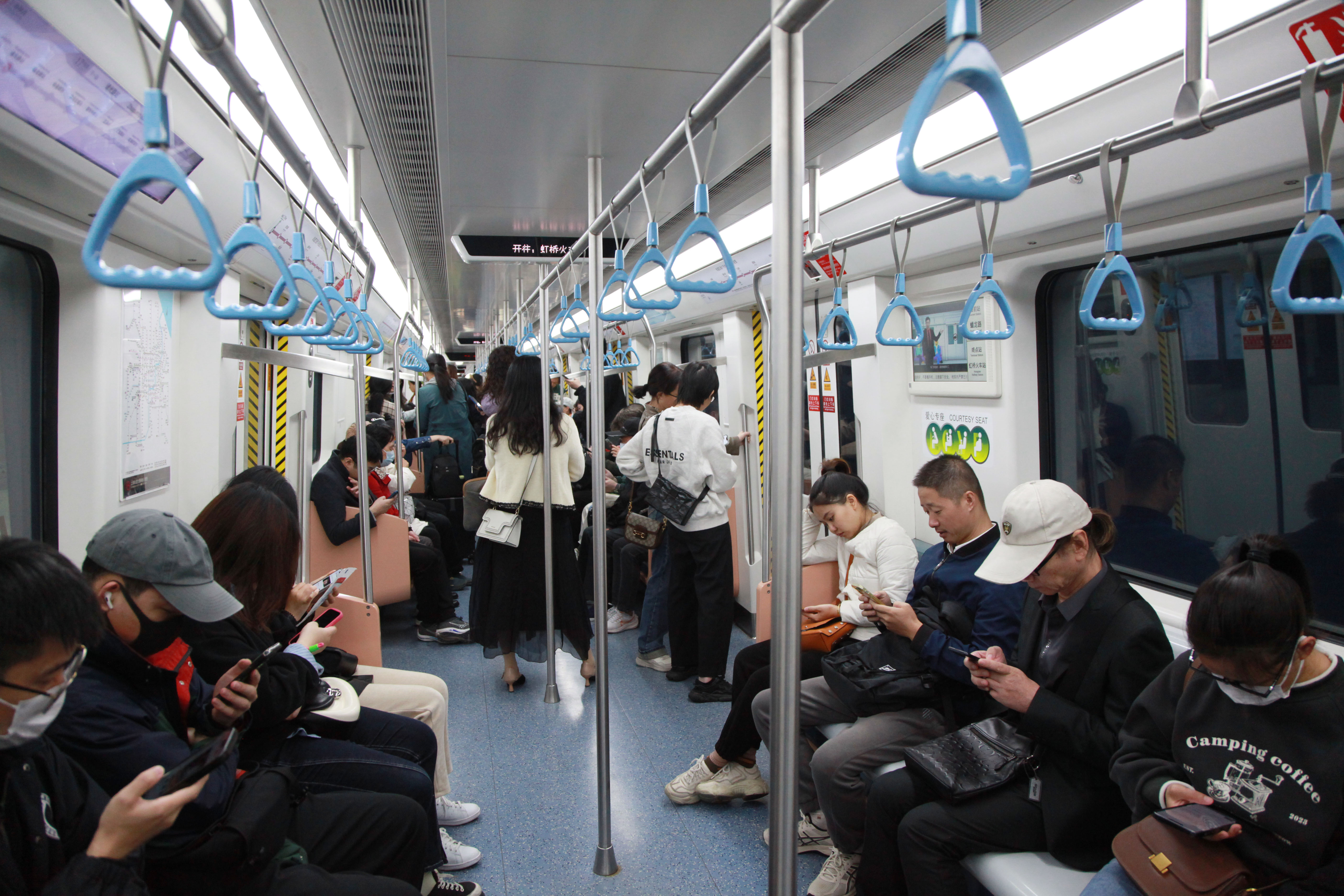
Passengers take the subway in Shanghai. Photo: VCG
The news about the trial of palm-scanning payment in Shanghai Metro has triggered a wide discussion online recently. In response, an official from Shanghai Metro told the Global Times on Thursday that the palm-scanning identity equipment is currently only used for research purposes, and is not open to the public.
“This equipment is deployed at some metro stations in Shanghai for testing only by working staff, not open to the public. After the research project is completed, its feasibility will be evaluated for potential future use,” said the official.
At the entry gate of a subway station in Shanghai, reporters noticed that the palm-reading equipment is added under the IC card swipe area. Passengers can hover over the center of the circle with their palm at a distance of 5 to 10 centimeters, according to media reports.
Meanwhile, the project triggered a wide discussion among netizens, with some being amazed by the advanced technology, others still having concerns over the biological information security.
“Palm-scanning payment is quite suitable for the subway and bus. I hope it can be popularized,” one netizen wrote via X-like Chinese social media Sina Weibo.
But some also expressed their worries in the sector. “Now I am more worried about the recognition of facial, fingerprint and palm print information. What if all the data is leaked in the future?”
Palm-scanning payments are not new. In May 2023, the Daxing Airport Line in Beijing became the world’s first demonstration line to apply biometric palm-scanning payment technology, the China Central Television reported. Passengers need to register their palm print and link it to their WeChat payment account before entering the subway. It allows passengers to swiftly access the station and make payments by scanning their palm, said the report.
In September, 2023, WeChat Pay announced that its palm payment service was available at more than 1,500 7-Eleven convenience stores in South China’s Guangdong Province. Customs can place their palms above a palm-reading device to make payments.
Global Times




